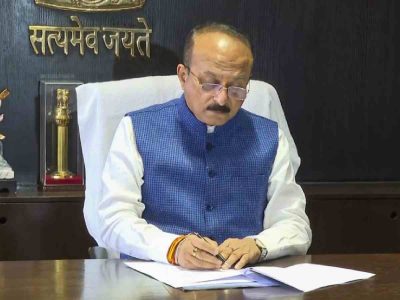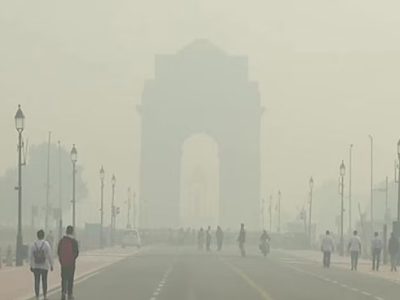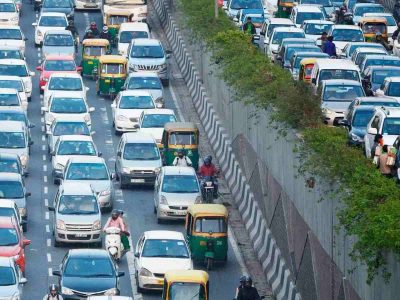Since the closure of Ashram flyover in the first week of January, commuters have been spending a frustrating time in hour-long traffic jams and have been forced to navigate maps for route diversions in Delhi NCR.
While the Delhi traffic police have announced several alternate routes, traffic snarls have crept in at all the crucial flyovers as a result of the closure of the Ashram flyover.
Menace for commuters
Until a week ago, Shomini Sen took an hour to drive to office in Noida from her home in Dwarka, but now her travel time has doubled due to the traffic.
“Usually, I drive through Moti Bagh to either take the Barapullah flyover or the Ashram flyover to reach my work-place in Noida sector 16A. Since the closure of Ashram flyover, much of the traffic has flowed to Barapullah. The side that opens to DND is choked these days because the number of cars approaching has increased. The traffic snarls begin two kilometres before approaching DND. So, the flyover is jam-packed during office hours in the day, and in fact till 8pm at night,” said Shomini, a journalist.
“If I leave office around 5pm, I reach home in Dwarka at 7pm,” she said.
The chaotic traffic snarls have permeated her daily life and its spill-over effect has been stressful.
“I am exhausted just by the travel these days and have become irritable. One day I missed a turn for the petrol pump and had to take a detour. There was no u-turn along the way and I had to drive all the way to Mahipalpur — close to Indira Gandhi International Airport — from Noida to take a u-turn to return to Dwarka. That day, it took me three hours to reach home,” she said.
Most commuters complained of an “incredible” amount of traffic on Delhi’s roads over the past seven months.
“Nowadays, travelling in Delhi has become dreadful because any time of the day you step out, you are stuck in traffic that is hardly moving. It was not like this until few months ago and looks like a recent development,” said Gaurav, an IT professional.
Gaurav travels to Faridabad from New Friends Colony (NFC) and takes the Mathura Road.
“I am always stuck in traffic, especially these days. Getting out of NFC and reaching Jasola Apollo Chowk takes 25-30 minutes these days. Before the Ashram chaos, it took me less than 10 minutes by motorcycle,” he said.
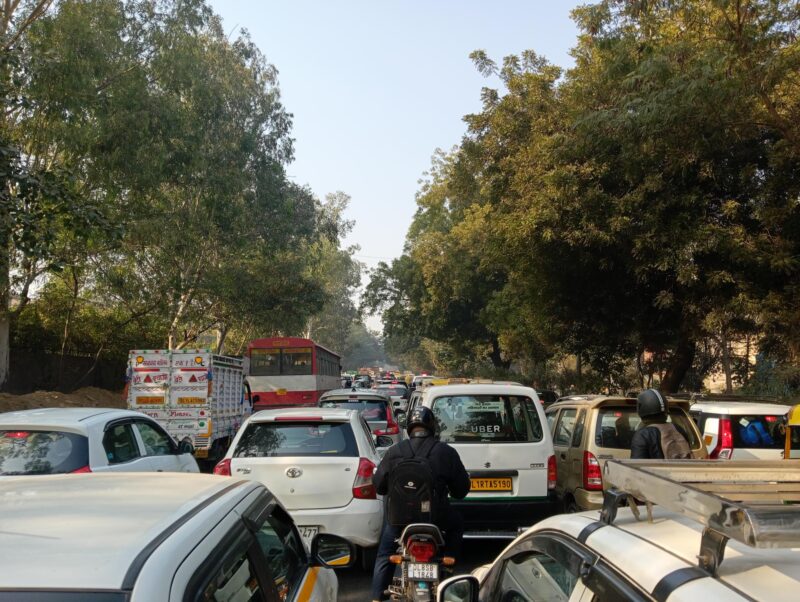
NFC to Jasola Apollo is a stretch of less than five kilometres.
“I do not even go towards the Ashram flyover, but its effect has reached till almost Badarpur. I used to reach office within 40 minutes and now that takes me almost 1 hour 15 minutes,” the 29-year-old added.
Photojournalist Suraj Singh Bisht, a resident of Noida, spends most of his day on the field for his work.
“Even for the assignments, I have to reach early, like half-an-hour in advance. Besides, searching routes to scout my location is a task in itself. Due to the closure of Ashram flyover and the subsequent diversion, commuters have to face a lot of traffic in Barapullah, Kalindi Kunj and also in Akshardham,” he said.
“Those travelling from Mayur Vihar nowadays take the New Nizamuddin bridge and Sarai Kale Khan road to reach Barapullah flyover due to congestion on DND flyway. This has resulted in severe traffic congestion even on the New Nizamuddin bridge,” he added.

Locals in distress
Residents around the Ashram Chowk are bothered by the traffic snarl.
“It has become so noisy these days. It is not like the locality was a quiet one earlier, but it was far better. Why is there construction happening all the time at this side? At night, even at 10-11 pm, we constantly hear horns blaring on the road. This affects our children,” said Radhika, a resident of Hari Nagar, Ashram.
Besides, a lack of space to “even walk” was a common complaint from the residents.
“There are cars all around. Recently, a two-wheeler was almost about to ram into school children returning home. It has become so risky and there seems to be no solution. There is no traffic guard on this part of the road. Why is there no management at all,” questioned Sunil, another resident and a father of two.
Since the closure of the flyover, parents rued that their little ones are always “tired due to longer travel”.
“Even on weekends, there is no respite,” added Sunil.
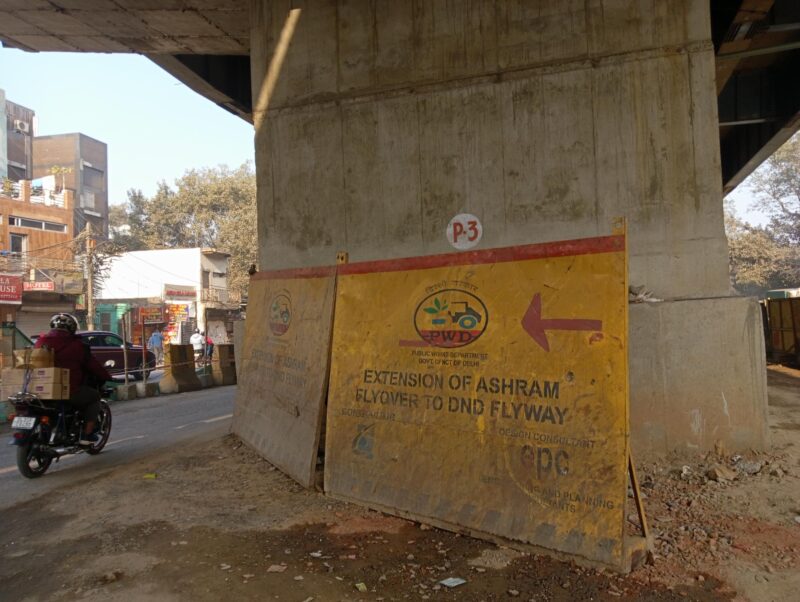
Jolt to livelihood
Beyond traffic delays and the din, the closure of the flyover has come as a severe setback for those living in abject poverty.
Local cycle-rickshaw pullers have alleged that they are forcibly removed from the side of the road by traffic police for causing obstruction to smooth vehicular movement during peak office hours.
Thirty-eight-year-old Probal Nath has been riding cycle-rickshaw for the past nine years near the junction, which leads to Nehru Place, below the Ashram flyover that is now under construction.
“It has become difficult to earn even Rs 200 a day because we are shooed away by the cops in the morning and evening during office hours. We earn the maximum during office hours,” said Probal, who moved to Delhi from West Bengal’s Basirhat.
The rickshaw pullers collectively complained that the only time they are allowed at the junction is in the afternoon when the number of passengers is “at its lowest”.
They have been banished to a road inside from 8 am to 12 noon and from 5 pm to 8 pm.
“All of us ride rickshaws that are registered for this route but for the past 10 days, we have been removed from our spot and moved further inside. This way, we have lost most of our passengers,” said Shariful, another rickshaw puller struggling to make a living.
A migrant from Bihar’s Kishanganj and living in Delhi for the past 25 years, Shariful showed the registration ID on the back of the rickshaws there.
“Earlier, we would earn at least Rs 350 – 400 per day on this route, but our earnings have come down to merely Rs 200. How do they expect us to survive like this? Most of our potential passengers don’t want to avail the rickshaw and prefer to walk the rest of the distance because our stop has been moved 500 metres further inside. Plus, not too many people are travelling in the afternoon,” he said.
“We keep to the side and don’t create any problem for anyone. We understand that cars have to move. For them it will be about some delay, but for us, it is about survival,” said Raju, who hails from Kiul in Bihar.
“We have to pay Rs 60 per day as rent for the rickshaw. Almost Rs 1800 from the total monthly earning goes into paying rent for the rickshaw. Phir aata hai rehne aur khaane ka kharcha (and then comes the expenditure to eat and live in Delhi). Four of us live in one room, which is of Rs 4,000. For every meal, we have to spend Rs 30-40. Rickshaw wala khayega nahi toh rickshaw chalayega kaise. (Rickshawpullers won’t be able to ride without eating). We are so worried. We can’t even save and send money to our family. I could send Rs 5,000 back home in 45 days last month. This month, I don’t know what to do,” he rued.
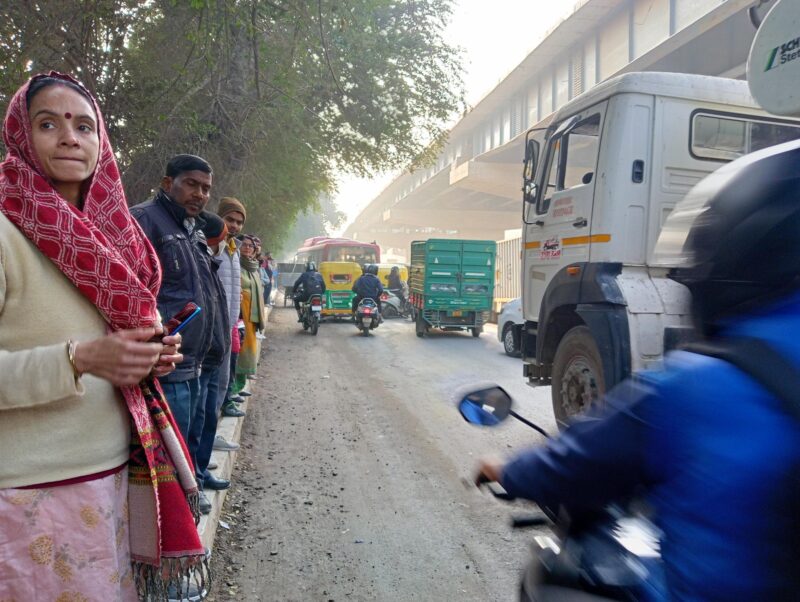
Thirty-three-year-old Waseem, who used to sell bread-omelette by the side of the road, had to hut his business as he was asked to move away from the junction. He now rides a rented rickshaw opposite the Ashram metro station to make a living.
“It was a huge loss for me. But we have to do something to earn a living,” he said.
Head Constable Ajit, who was managing the traffic during the time of Patriot’s visit, said the rickshaws “take up a lot of road space, so they are asked to move a little further”.
“The traffic needs to keep moving because cars are coming in from three sides and with the closure of the Ashram, the roads inside have to be expanded,” he said.
Follow us on:
Instagram: instagram.com/thepatriot_in/
Twitter: twitter.com/Patriot_Delhi
Facebook: facebook.com/Thepatriotnewsindia


